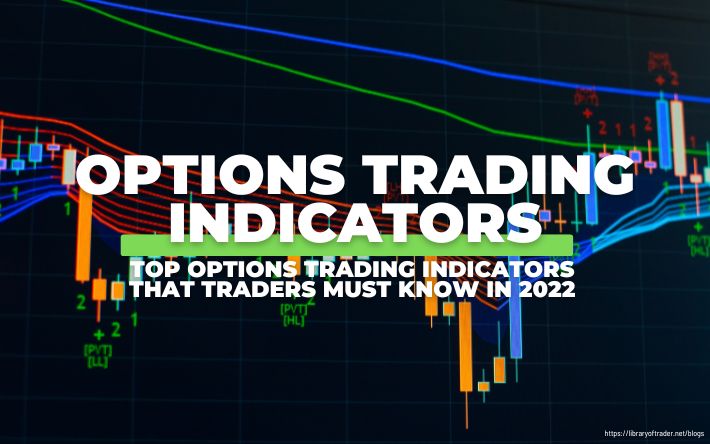Introduction
Technical indicators are used by traders, some of which are the finest options trading indicators for options traders. Options trading is not identical to equities trading. The trading parameters change due to the varied valuation criteria of options. The main distinction is that options have limited lifetimes, with over 90% of them being worthless at expiry. As a result, you cannot remain engaged in options for long.
Long-term investors are not generally interested in options trading indicators. Options are financial tools that are best suited for short-term trading. Because of the complexities, options are traded on a daily basis and utilized as a hedging mechanism. For options trading, experienced options traders employ the finest options trading indicators based on technical analysis. The majority of the technical indicators used by options traders are also the finest indications for intraday trading.
What are Indicators in Trading?

Options trading indicators are mathematical computations that are presented as lines on a price chart to help traders recognize particular signals and trends in the stock market. They are essentially a set of tools that can be used in a trading chart to help decipher the market and generate a more accurate analysis.
In the realm of investing, options trading indicators are often technical chart patterns derived from a security’s price, volume, or open interest. Moving averages, moving average convergence divergence (MACD), relative strength index (RSI), and on-balance-volume are all common technical indicators (OBV).
In economics, options trading indicators are bits of economic data that are used to assess the overall health of the economy and forecast its future direction. The Consumer Price Index (CPI), Gross Domestic Product (GDP), and unemployment numbers are among them.
How Options Trading Indicators Can Be Classified?

Economic indicators and technical indicators are the two primary categories of options trading indicators.
Economic indicators are statistical measurements used to quantify the overall or sectoral development or contraction of the economy. Economic indicators that measure present economic and industry circumstances are utilized in fundamental analysis to give insight into public firms’ future profitability potential.
In technical analysis, technical indicators are often employed to forecast changes in stock trends or price patterns in any traded asset.
What Kinds of Options Trading Indicators Are There?
To make informed selections about which options trading indicators are most suited to your trading strategy (https://libraryoftrader.net/how-to-develop-a-trading-strategy), you must first use information and analyze your risk tolerance. Option traders’ favorite indicator kinds include:
Relative strength index (RSI)
The Relative Strength Index (RSI) is another oscillating indicator used by traders to gauge market momentum, market conditions, and probable price movements. Its value ranges from 0 to 100, delivering a different type of information than a MACD indicator. In general, an asset hitting the 70 level is regarded as overbought by the market, whilst an asset around the 30 level is considered oversold.
Short-term gains may be fading, and assets may be preparing for a market drop due to an overbought indicator. An oversold signal, on the other hand, may indicate that short-term declines have ceased and assets are positioned for a rally.
Trading indicators such as trendlines and moving averages may be used to indicate trade direction as well as trade direction.
Moving average (MA)
The moving average, often known as the Small Moving Average, is a price trend indicator that balances pricing data by updating the average price on a regular basis. This technical analysis method combines price points of financial instruments over a specified time period. The MA indicator creates a trend line, which eliminates any swings caused by random price spikes.
MAs aid traders in identifying trends and are an important aspect of their trading strategies. If the current price is above a moving average, long bets should be considered; conversely, if the price action is below the moving average, short bets should be considered.
Exponential moving average (EMA)
Because the most recent data points are given a larger weightage when generating EMA (https://www.investopedia.com/ask/answers/122314/what-exponential-moving-average-ema-formula-and-how-ema-calculated.asp), it is more responsive to new information than the SMA. Moving averages that are exponentially weighted can also be used. This is due to the fact that EMAs are extremely sensitive to recent price fluctuations.
In summary, the most often utilized EMAs are 12 and 26 days, with 50 and 200 days used as trend indicators. Furthermore, when combined with other indications, these oscillators corroborate and examine the authenticity of big market movements.
Moving average convergence divergence (MACD)
MACD identifies momentum changes by comparing two moving averages. Support and resistance levels might assist identify potential buy and sell opportunities.
When two moving averages diverge, they are called convergent; when they converge, they are called divergent. This means that momentum decreases when moving averages converge but rises when moving averages diverge.
This is an oscillating technical analysis indicator that moves inside a band over time (above and below a centerline; the MACD fluctuates above and below zero). The MACD indicator may be used to track both trends and momentum. To suggest that the stock is expected to rise, the MACD lines must be above zero for a lengthy period of time.
On-balance-volume (OBV)
The on-balance volume (OBV) is a useful indication that combines a large quantity of volume data into a single one-line indicator. The cumulative purchasing and selling pressure is calculated by adding volume on “up” days and subtracting volume on “down” days. The volume should ideally confirm trends. If the price rises, so should the OBV, and vice versa.
Intraday Momentum Index (IMI)
The Intraday Momentum Index is a useful technical indicator for high-frequency option traders who want to speculate on intraday price movements. It combines the principles of intraday candlesticks and RSI, offering a proper range for intraday trading (similar to RSI) by signaling overbought and oversold levels. An options trader using IMI may be able to identify prospective opportunities to enter a bullish trade in an up-trending market at an intraday correction or a bearish trade in a down-trending market at an intraday price bump.
Money Flow Index (MFI)
The Money Flow Index is a momentum indicator that takes into account both price and volume data. Volume-weighted RSI is another name for it. The MFI indicator measures the inflow and outflow of money into an asset over a specific time period (typically 14 days) and is an indicator of “trading pressure.” A reading of 80 or higher indicates that a security is overbought, while a reading of 20 or lower indicates that the security is oversold.
MFI is more suited to stock-based options trading (rather than index-based) and longer-duration deals due to its reliance on volume data. When the MFI moves in the opposite direction of the stock price, it can be used to predict a trend shift.
Put-Call Ratio (PCR) Indicator
The put-call ratio compares the trading volume of put options to call options. Rather than the absolute magnitude of the put-call ratio, fluctuations in its value imply a shift in market opinion.
When there are more calls purchased than puts, the ratio is greater than one, suggesting bullishness. When put volume exceeds call volume, the ratio falls below one, signaling bearishness. However, traders may use the put-call ratio as a contrarian indicator, choosing to trade against market trends in the expectation of a turnaround.
In conclusion
Trading indicators, in addition to simplifying price information, may be used to provide trade signals and reversal warnings on all time frames since they typically include variables that can be changed to fit the trader’s tastes. When you mix indicators or personalize your trading techniques, you may create unambiguous entry and exit conditions.
Learning to trade with indicators might be difficult. As a result, it is best to test it first before doing any real-time transactions. The attraction of a certain indicator may affect your choice to investigate it. For individuals who have never traded before, creating a brokerage account is a necessary first step.


